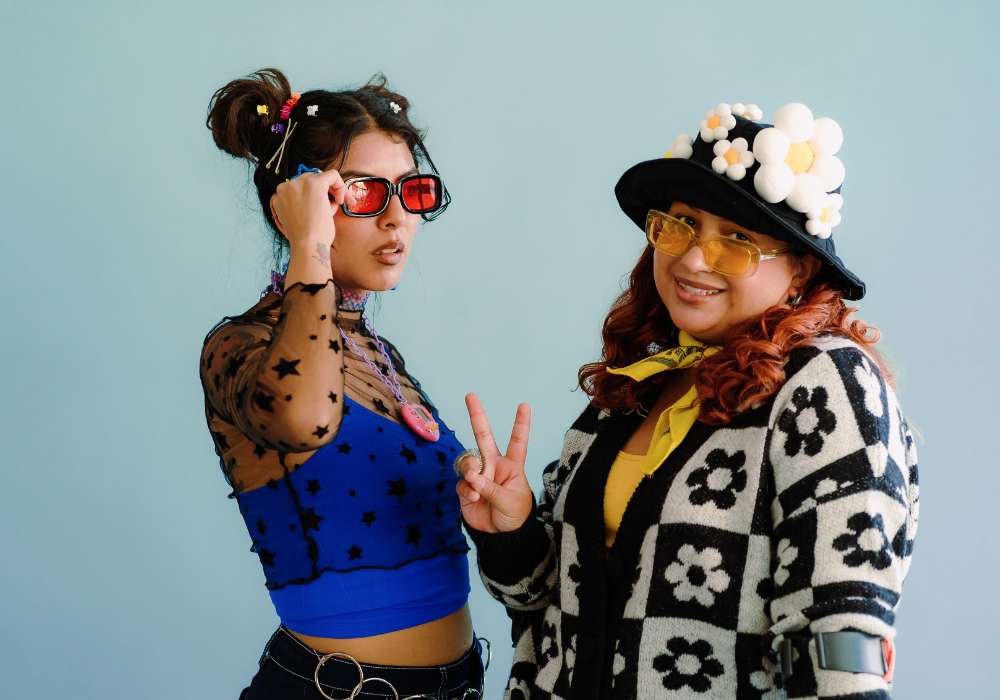Fashion, a reflection of societal change, undergoes transformation as the decades pass. As we compare the fashion industry of the 1990s with today, we witness shifts in design aesthetics, cultural influence, marketing, and accessibility. In this comparative analysis, we’ll explore the strengths, weaknesses, and key contrasts between these two distinct periods.
1. Design Aesthetics
1990s: The decade started with an overflow of 1980s opulence but swiftly moved towards two primary trends: grunge and minimalism. Grunge, influenced by alternative rock bands, manifested itself in oversized flannel shirts, distressed denim, and combat boots. Minimalism, on the other hand, showcased pared-back designs, focusing on simplicity and functionality.
Today: Contemporary fashion is characterized by an eclectic mix of styles, often combining elements from various eras, including the ’90s. Sustainability has become a significant influence, prompting a shift towards eco-friendly materials and production methods. Also, we see a focus on inclusivity, with designs catering to all body types, genders, and ages.

2. Cultural Influence
1990s: The decade was heavily influenced by music, from grunge rock to hip-hop. This cultural impact was reflected in streetwear, which began to gain mainstream attention. Supermodels, dubbed as ‘The Big Five,’ brought celebrity culture into the fashion world, creating an aspirational lifestyle that many desired.
Today: Social media and influencers hold considerable sway over today’s fashion trends. They have democratized fashion, enabling anyone with an internet connection to share their style and influence trends. Activism also plays a role, with fashion being utilized to express political views and societal values, such as gender fluidity and sustainability.
3. Marketing and Consumption
1990s: The era of supermodels and high-profile fashion shows made the industry feel glamorous and exclusive. Luxury brands utilized ‘logomania’ to turn their customers into walking advertisements. However, fashion was primarily marketed through traditional media channels like television and print.
Today: Digital marketing has revolutionized the fashion industry. Social media platforms, influencers, and online fashion shows have made fashion more accessible to a global audience. E-commerce allows for direct-to-consumer sales, while data analytics enable personalized marketing strategies.

4. Accessibility and Production
1990s: While the ’90s saw some diversification in high fashion with the emergence of streetwear, the industry remained relatively exclusive. Production was slower, focusing on seasonal collections.
Today: Fashion is vastly more accessible, with fast-fashion brands offering trendy clothes at affordable prices. However, this has led to concerns over sustainability, prompting a push towards slow fashion. Advances in technology have also paved the way for on-demand production and customization.
5. Conclusion: Advantages and Disadvantages
The fashion industry of the 1990s had its unique charm. It was a time of new styles and cultural shifts, marked by memorable supermodels and iconic trends. However, it was often exclusive and slow to change. The logomania trend, though effective for branding, also nurtured consumerist tendencies.
Today’s fashion landscape offers greater accessibility and inclusivity, and the power of the internet cannot be overstated. Yet, it faces its own set of challenges. The rise of fast fashion has led to environmental concerns and questions about workers’ rights. The democratization of fashion, while positive in many aspects, can also lead to oversaturation and a lack of originality.
As we reflect on these two eras, it becomes evident that each period in fashion history brings its own sets of triumphs and trials. Both the ’90s and today’s fashion have left indelible marks on society, pushing boundaries, reflecting cultural shifts, and continuously evolving to mirror our changing world.





